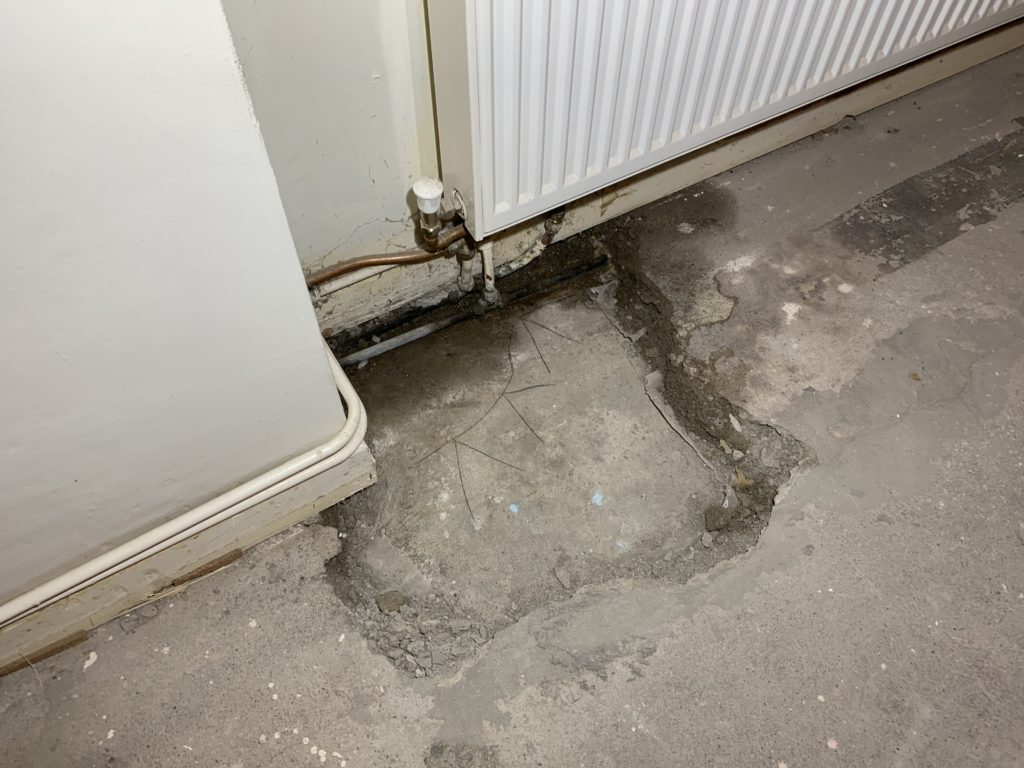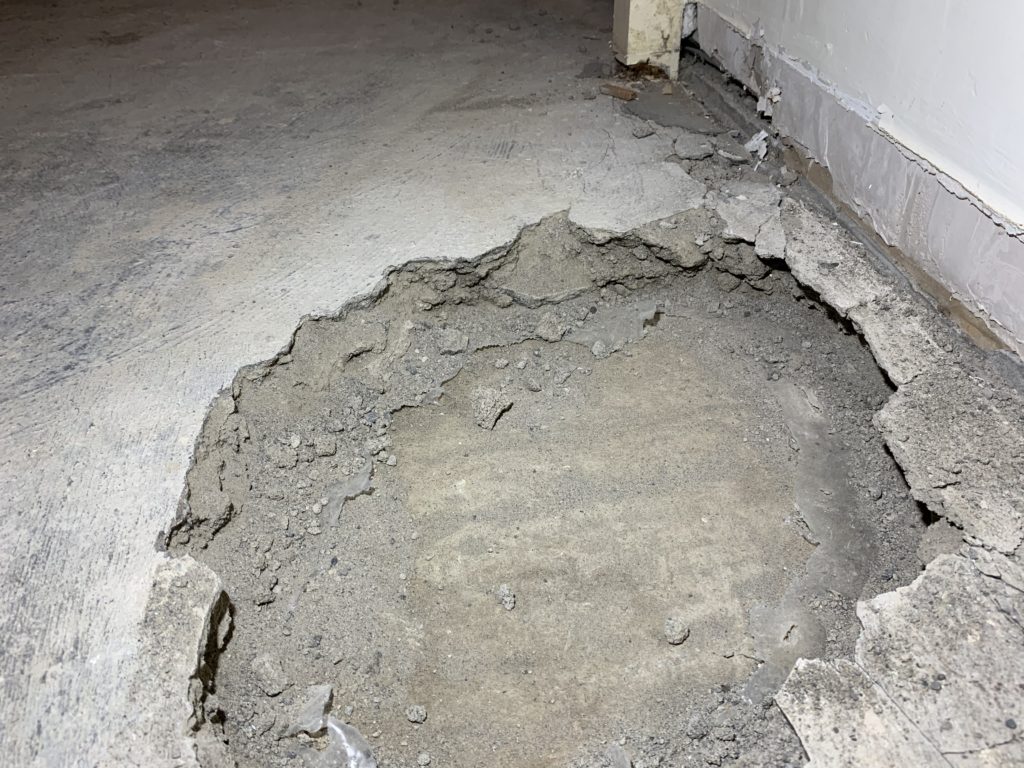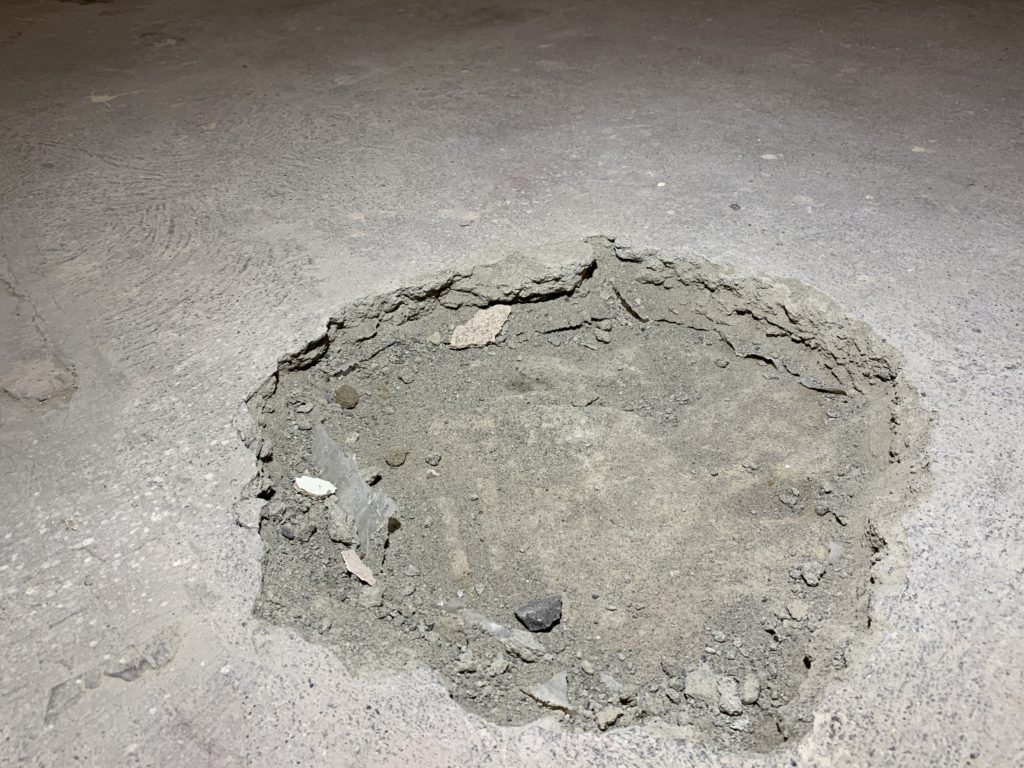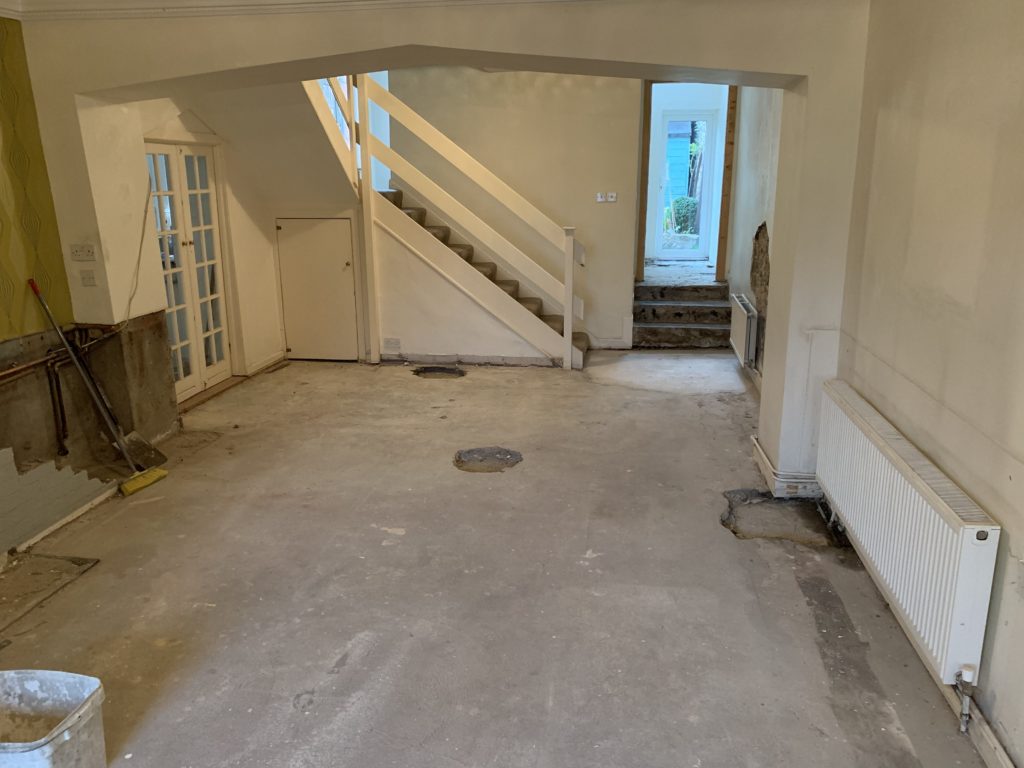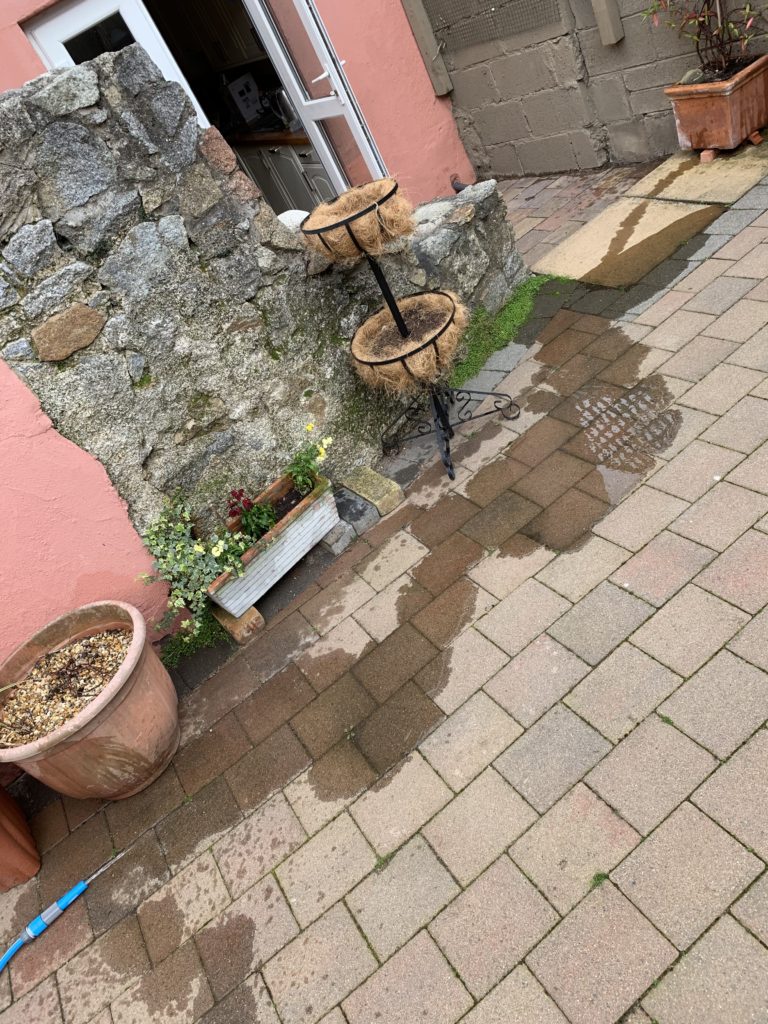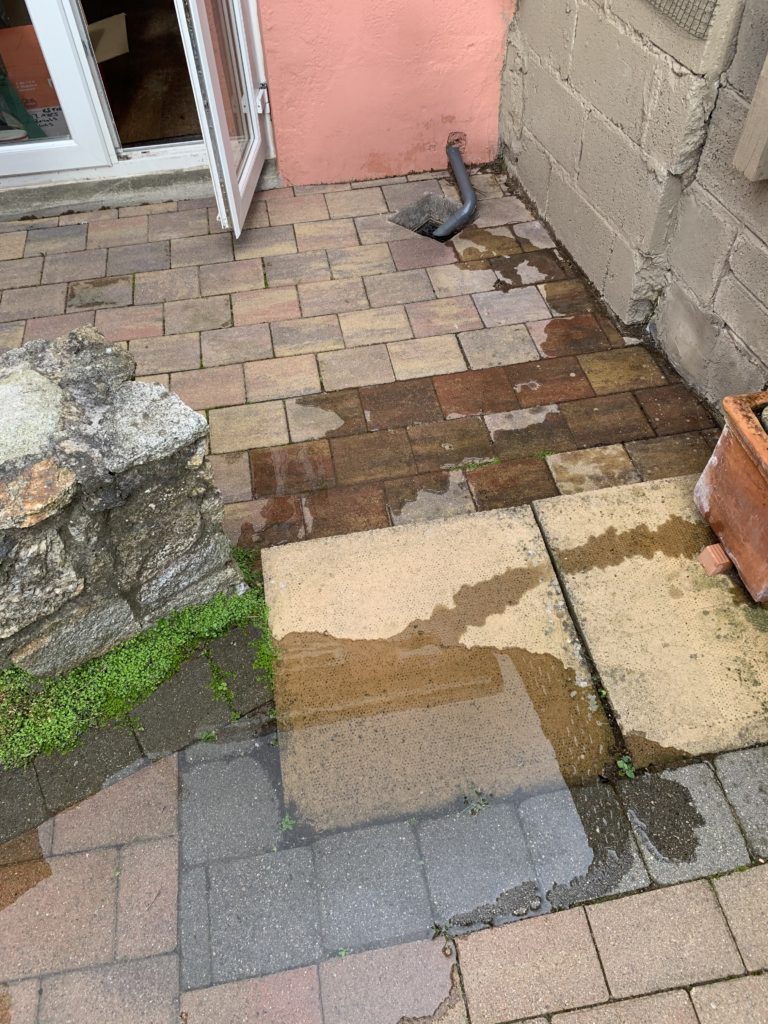The poking over the weekend has determined that there are some definite issues to resolve.
Water pressure and piping
The water pressure off of the mains is far too low; with all the stopcocks wide open, I can drain the cold storage tank by running the bath faster than the mains supply can refill it. I reckon I can drain the whole tank (it’s not too big, but is over 100 litres) in under 10 minutes. I’ve also put my finger across the garden tap, and I can stop the flow easily – it doesn’t pressurise and spray, and when it starts back up, there’s a limpness to the flow before it comes back at full pressure.
The garden tap is also T’d off of the mains supply before the stopcock, which isn’t exactly legal. Also not helping is the water pipe being lead. The internal piping appears to be polyethylene pipes – at least in the kitchen and bathroom, which means there’s a switch-over from the lead to plastic at some point; just have to find where. The lead has to go, regardless.
The current hypothesis is that there’s a significant leak in the pipe between the stopcock and the mains stopcock (buried in the pavement). Unfortunately, without a meter by the mains stopcock (looks like Irish Water installed a new boundary box, but not a meter), I can’t prove this. Plumber time; get a temporary meter installed to measure the pressure perhaps.
Internal dampness
The nut on either the flow or return for the middle radiator in the living room isn’t on properly, and it’s leaking into the cement slab and filler. This will contribute to damp readings in the wall, and needs to be fixed. The plan is to replace the radiators with vertical ones, so that piping will go away. The copper pipe has gone a nice shade of blue.
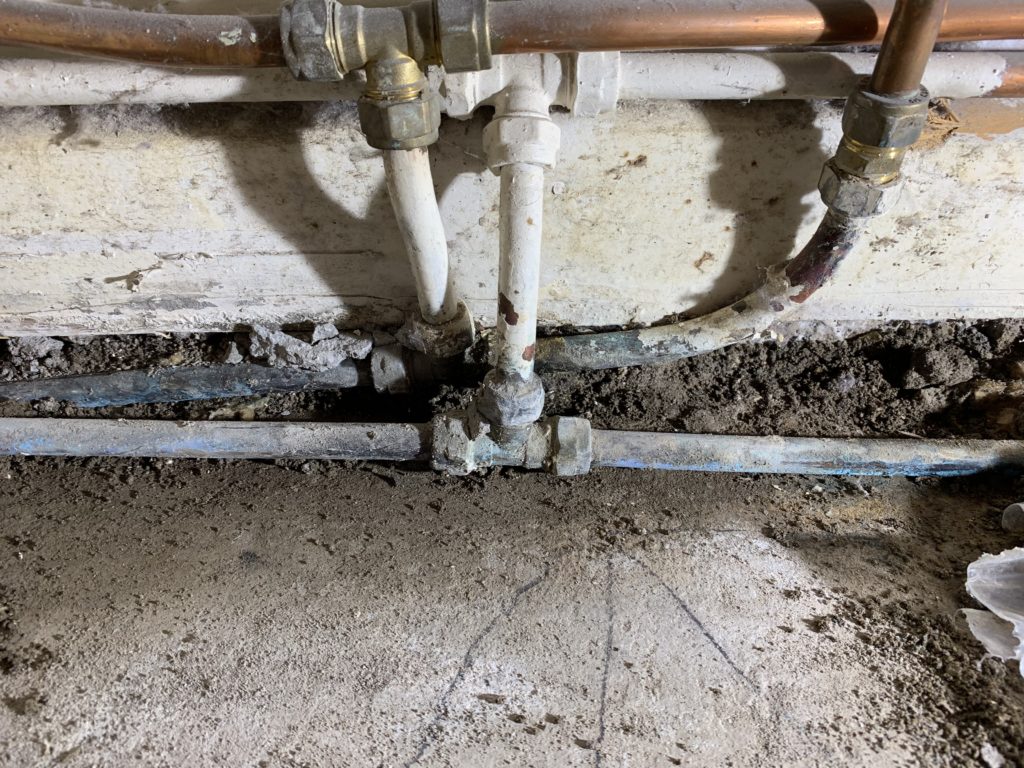
Further poking at the porch also confirmed that there’s no damp proof course in the cavity concrete block parts of the porch walls, and the door has no damp proofing either. My QS friend was fairly certain that the relevant steel bar also hadn’t been installed below the door; it’ll have to be removed to confirm that.
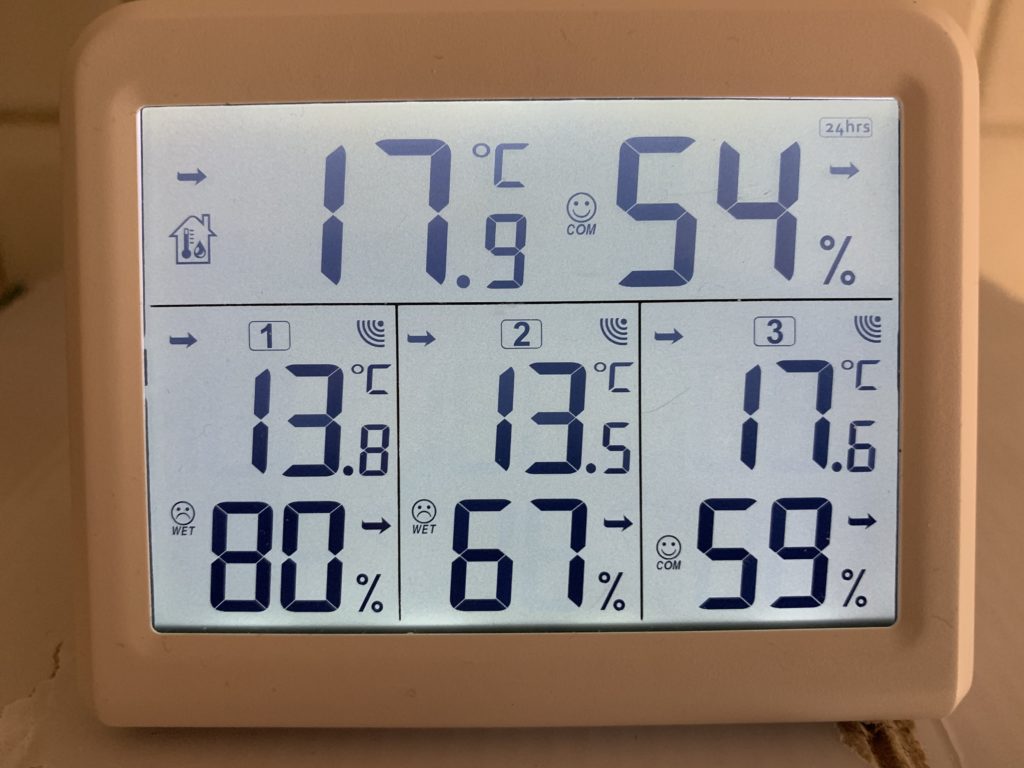
One question is whether the dampness in the porch (a humidity sensor puts a kango’d hole at 85% relative humidity) is caused solely by the lack of damp proofing on a north-east facing porch (and this house is only a km or two from the sea to the north and east), or if the lack of water pressure happens to point the leak in the inbound pipe right in the vicinity of the porch.
The thermo-hygrometer display is not the most accurate in the world, but it’s enough to get relative readings.
Throwing water on the roof of the porch showed that most of it went into the gutter (which drips in the middle, just needs re-sealing), and a little went down the party wall. QS friend poked the wood of the soffit, and it’s a bit too soft; probably the wrong type of wood used, but not going to be the source of major damp inside the property. So the hypothesis that the party wall in the porch is damp because of the roof of the porch let water into the wall seems to be losing strength. The water also ran away from the house when poured on to the concrete slab outside the front door, so the tarmac is sloped correctly.
On the other hand, the hypothesis that the damp is due to the porch is gaining evidence. The pattern of protimiter readings (RF based, not probe) showed that the porch was very damp (maxed out the scale), that the wall between the porch and the breakfast room was damp, and that the damp receded on the party wall the further you got from the porch.

Flooring
The kango’d holes show that the existing floor is built on top of a cement slab, and has been built poorly. The sand/cement mix between the slab and the floor skim has been mixed at the wrong ratio according to my QS friend, which is why it’s just powder, instead of set cement. It looks like the whole thing will have to come up.
A tap test, using a broom gives reasonable responses in some places (a ringing/sharp tone when the broom handle is allowed to fall on the floor from a metre), but in others there’s a dull thud, or even a hollow “pock” sound. Delamination and other problems, there’s no point trying to do spot fixes.
The upside of having to take up all that cement is it’ll make it much easier to install the gas pipe and run a new polyethylene water pipe into the house (to get rid of the lead pipe). It should be possible to run straight through the porch to the staircase, put a stopcock there for the house, and then nip around the bottom of the stairs into that right-hand passageway – the existing main feed shows up just off of the passageway, so easy to find the rest of the piping. I hope.
All for a fireplace
This investigative journey started when I decided I’d like to recommission the fireplace, but couldn’t because the gas pipe ran through it. When the builder was taking the existing fireplace to pieces, the flue fell down.
It’s asbestos. It must go, I have no choice in this matter (and my choice would be to get rid of it).
Outside
There’s more pooling than I’d like in that water path, but it’s not a crucial fix right now. More crucial is probably the fact that the boundary between the blocks and the house looks permanently damp (it hasn’t rained recently). The plan to take up this set of blockwork to replace it with gravel may have to wait.
